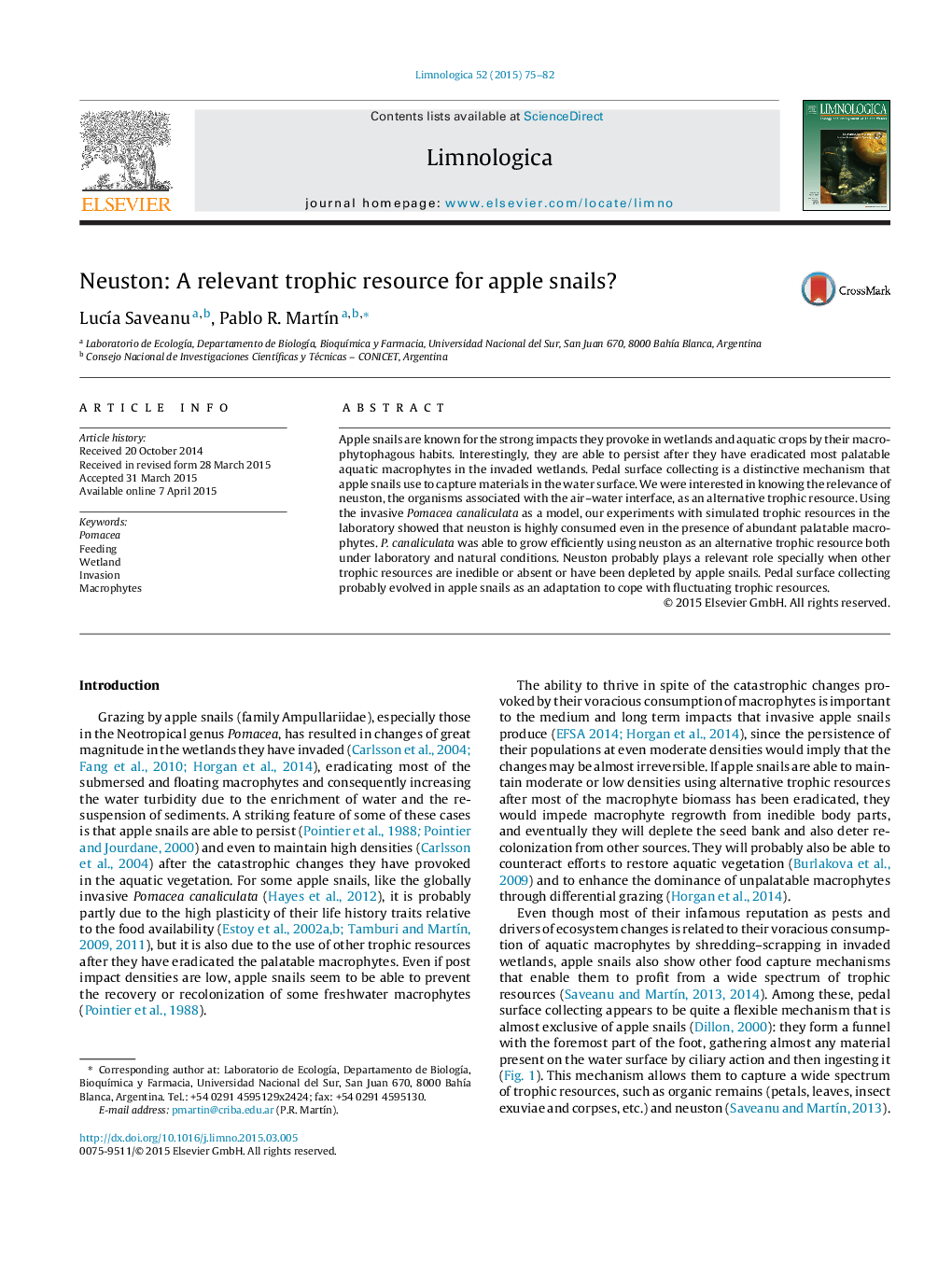| Article ID | Journal | Published Year | Pages | File Type |
|---|---|---|---|---|
| 6305543 | Limnologica - Ecology and Management of Inland Waters | 2015 | 8 Pages |
Abstract
Apple snails are known for the strong impacts they provoke in wetlands and aquatic crops by their macrophytophagous habits. Interestingly, they are able to persist after they have eradicated most palatable aquatic macrophytes in the invaded wetlands. Pedal surface collecting is a distinctive mechanism that apple snails use to capture materials in the water surface. We were interested in knowing the relevance of neuston, the organisms associated with the air-water interface, as an alternative trophic resource. Using the invasive Pomacea canaliculata as a model, our experiments with simulated trophic resources in the laboratory showed that neuston is highly consumed even in the presence of abundant palatable macrophytes. P. canaliculata was able to grow efficiently using neuston as an alternative trophic resource both under laboratory and natural conditions. Neuston probably plays a relevant role specially when other trophic resources are inedible or absent or have been depleted by apple snails. Pedal surface collecting probably evolved in apple snails as an adaptation to cope with fluctuating trophic resources.
Related Topics
Life Sciences
Agricultural and Biological Sciences
Aquatic Science
Authors
LucÃa Saveanu, Pablo R. MartÃn,
